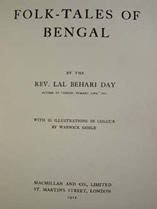COLONIAL DISCOURSES
Series Three: Colonial Fiction
Part 3: General Works and Fiction from India, from the British Library, London
This third part of the third series of Colonial Discourses completes our coverage of Indian fiction from the British Library and the former India Office Library. We have now made available close to 300 titles (many are multi-volume works), of which nearly 200 are novels, some 31 are volumes of poetry, and a 64 are supporting works, helping scholars to understand the context of literature. This is a superb resource for universities supporting the study of comparative literature and for all those with an interest in the history and literature of South Asia.
The provision of supporting works is particularly helpful in the area of ‘Mutiny’ narratives, which is one of the strengths of this third part. A dozen fictional works are balanced by nine autobiographical or historical accounts. We include volumes published in London and in India, and many are also ‘captivity’ narratives – a genre which is gaining more attention. Noteworthy titles include:
- Hafiz Allard (pseud), Nirgis: a tale of the Indian Mutiny; and Bismallah; or, Happy Days in Cashmere. (London, 1869)
- Katherine Bartrum, A widow’s reminiscences of the Siege of Lucknow. (London, 1858)
- Noah Alfred Chick, Annals of the Indian Rebellion … containing narratives of the outbreaks … during the Mutiny. (Calcutta, 1859)
- Alice Clifton, An unwilling wife: a tale of the Indian Mutiny. (London, 1890)
- [J F Fanthorne], Mariam: a story of the Indian Mutiny of 1857. (Benares, 1896)
- Julia Selina Inglis, Letter containing extracts from a journal kept by Lady Inglis during the Siege of Lucknow. (London, 1858)
- Miss Wagentreiber, The story of our escape from Delhi, in 1857. (Delhi, 1894)
- John Richard Baldwin, Indian Gup: Untold Stories of the Indian Mutiny. (London, 1897)
- Mrs Dunbar Douglas Muter, My recollections of the Sepoy Revolt (1857-1858). (London, 1911)
Another area that is covered well is life in the Zenana, or the women’s quarters of the royal palaces. These were an area of constant fascination for the West, with the juxtaposition of dancing girls, courtesans, wives and daughters. But they were also regions of power and influence, as many of the missionaries found. Some of the fascinating titles featured are:
- G Arnold Fernandez, The Romance of a Zenana. (Madras, 1900)
- William Browne Hockley, Tales of the Zenana; or, Nuwab’s leisure hours. (London, 1874)
- Anon, Kardoo, the Hindoo girl. By a Zenana missionary. (London, 1878)
There is also much on social history and the wide range of characters found in Indian society. For instance:
- Sydney Owenson (later Lady Morgan), The Missionary: an Indian Tale. (London, 1811)
- Augustus Prinsep, The Baboo; and other tales descriptive of society in India. (London, 1834)
- Septimus Thorburn, Musalmaqn and money lenders in the Punjab. (Allahabad, 1886)
- Arthur Brownlow Fforde, The Subaltern, the Policeman and the Little Girl. (London, 1890)
- James Patton (pseud. of Edmund White), Bijli the dancer. (London, 1898)
- H Datta, Lieut Suresh Biswas: His life and adventures. (Calcutta, 1900)
- Tarakanatha Gangopahyaya, A glimpse into the Indian inner home: Babu Tarakanath Ganguli’s Bengali novel – Svarnalata. (Calcutta, 1903)
There are also works describing both Imperial heroes and those that fought against empire, ranging from John Clark Marshman’s Memoirs of Major-General Sir H Havelock (London, 1860) to Edmund Candler’s account of Siri Ram, Revolutionist (London, 1912).
The poetry and drama section of this third part is headed by a number of key works by the famous Indian poet, feminist and political reformer, Sarojini Naidu. In addition to volumes of poetry such as The golden threshold (London, 1905) and The broken wing: Songs of love, death and destiny, 1915-1916 (London, 1917); we also include critical works such as Mrs Sarojini Naidu. A sketch of her life and an appreciation of her works. (Madras, 1914); and political works such as Speeches and writings (Madras, 1918).
The folk tradition of Indian poetry is well represented in Lal Behari Day’s Folk tales of Bengal (London, 1883) and we also include The Bengal Magazine, 1872-1873, which was edited by him. The Eurasian poet and social reformer, Henry Louis Vivian Derozio, is also featured with both his Poems (Calcutta, 1827), and The Fakheer of Jungheera, a metrical tale; and other poems (Calcutta, 1828).
Other key authors featured range from Pandita Ramabai Saraswati to Flora Annie Steel. The latter is represented by both a novel, The law of the threshold (London, 1924), and a compendium on The modern marriage market, written with Maria Corelli and others (London, 1898). This supplements the other Steel works already included in this project.
We have also included a number of miscellaneous volumes of great interest:
- Philip Stewart Robinson, Nugae Indicae. (Allahabad, 1871)
- Philip Stewart Robinson, Under the punkah [miscellaneous prose]. (London, 1881)
- Afghan (pseud.), Best Indian chutney sweetened. Some Eastern vignettes. (London, 1925)
- Meredith White Townsend, The Indian official thesaurus. (Serampor, 1858)
- Chutney Papers. Society, Shikar and Sport in India by C.M., a Bombay-walla. (Bombay, 1884)
|

|















